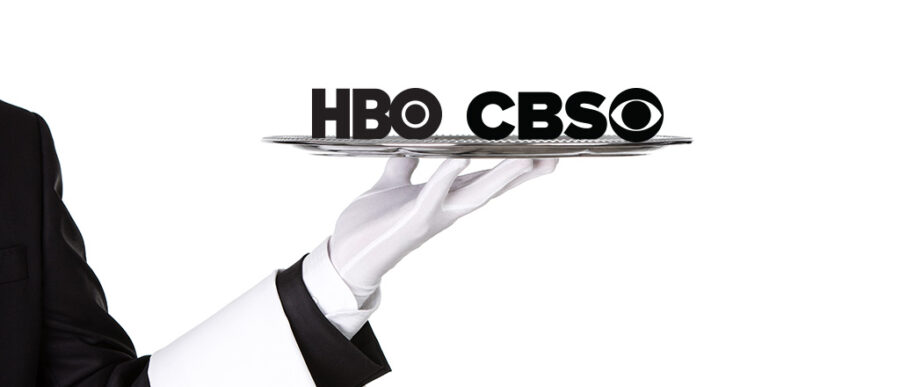The great TV unbundling experiment is underway and it’s bound to rewrite the economics of the cable industry, as well as that of traditional media companies.
On October 15, Time Warner unveiled plans to launch a stand-alone HBO subscription separate from cable providers in 2015. A day later, CBS created an “all access” $5.99 a month subscription to its website and mobile apps featuring live streams of local stations, as well as full seasons of current shows, which will be available the day after they are aired, and an archive of classic content such as Star Trek and Cheers.
It’s likely that other companies will follow suit. “The unbundling shows that media companies realize that multiple distribution channels give customers the version of the content they want when they want it,” says Eric Bradlow, a marketing professor at Wharton. “These moves broaden the base of viewers.”
Kartik Hosanagar, an operations and information management professor at Wharton, notes that media companies, particularly premium channels like HBO, have gotten to the point where they have to explore other options. “They were leaving a lot of money on the table —especially with younger users [who are increasingly forgoing cable subscriptions in favor of online streaming] — and it was time to monetize that demand.”
But where will individual subscription options, which are known as “over the top”plans, lead the industry —and consumers? Currently, the quintessential over the top subscription plan is Netflix’s streaming service. For a monthly fee, consumers access Netflix’s original content, such as Orange is the New Black and House of Cards, as well as an extensive library of licensed movie and television content. Netflix’s has focused its marketing and growth efforts on Internet streaming, though the company also offers DVDs or Blu-ray discs by mail.
That competition means that HBO, CBS and other media players are going to have to find alternative revenue streams and distribution options beyond the traditional cable providers. “It’s a weird state we’re in with TV and it’s hard to say how it will play out,” says Shawndra Hill, an operations and information management professor at Wharton. “In general, we’re headed to a new way for television to be offered and we’ll see everything online.”
For years, Netflix CEO Reed Hastings has said that HBO is likely to be its biggest competition. Following word of HBO’s subscription service, Hastings and CFO David Wells said in an October 15 investor letter that HBO’s Internet subscription plan “was inevitable and sensible” and that “many people will subscribe to both Netflix and HBO since we have different shows.” Hastings and Wells added that both companies will likely prosper “as consumers move to Internet TV.”
“In general, we’re headed to a new way for television to be offered and we’ll see everything online.” –Shawndra Hill
Kevin Werbach, a legal studies and business ethics professor at Wharton, agrees. “Netflix and Amazon have proven that the streaming model can work. Netflix is investing heavily in original content production, which puts it directly in competition with HBO,” says Werbach. “Everyone in the industry knows the Internet is the distribution platform of the future, and the major players have all made arrangements to protect themselves.”
The Ins and Outs of A La Carte TV
Shortly after Richard Plepler, CEO of HBO, announced the channel’s Internet subscription effort, questions and speculation emerged about the economics of the plan. Plepler called the service “transformative,” but neglected to mention many details.
“There are 10 million broadband-only homes in the United States, and that number is expected to grow. Of today’s 10 million, about half subscribe to a streaming service. These consumers have no access to HBO. That is a large and growing opportunity that should no longer be left untapped,” said Plepler. “We will work with our current partners, and we will explore models with new partners. All in, there are 80 million homes that do not have HBO, and we will use all means at our disposal to go after them.”
The Wall Street Journal later reported that HBO would price its service at no less than what it costs cable subscribers — roughly $15. The goal for HBO would be to keep so-called cord cutters—those with only a broadband connection and no cable TV—in the fold. HBO could also offer its Internet subscription with cable broadband partners as a package. FBR analyst Barton Crockett said in a research note that if HBO could convince four million people to pay $15 a month for the Internet-only service it could generate $500 million in incremental revenue a year.
Plepler’s comments about working with partners indicate that HBO won’t cut cable providers completely out of the equation. “The cable operators won’t let HBO do any online distribution deals that seriously threaten their revenue streams,” Werbach notes. “Today, though, those revenue streams come as much from broadband [Internet services] as from video distribution. So HBO being available over the top isn’t necessarily a danger, especially for homes buying [a cable company’s] broadband service. The cable operator loses the revenue, but also the programming costs, and it still has a huge bundle of programming, including sports, to keep subscribers.”
“Netflix and Amazon have proven that the streaming model can work. Netflix is investing heavily in original content production, which puts it directly in competition with HBO.” –Kevin Werbach
The plan announced by CBS included more details, yet analysts questioned its appeal. CBS will charge $5.99 a month and subscriptions will be available on Internet connected devices. Geotargeting will enable news stations to keep streams local. The catch is that new CBS content, unlike that of HBO, not to mention over the air for consumers with a digital receiver or converter box, said Gabelli analyst Brett Harriss.
Analysts called the CBS service the network’s own version Hulu Plus and noted that the Internet subscription is more of an insurance policy in case viewers move away from cable bundles more quickly than expected.
Long Live Bundling?
The move to stand-alone subscription plans simply reflects the competitive dynamics of today’s TV landscape. CBS’ move or HBO’s could spur other broadcast and cable networks to offer their own subscription plans. If all media companies created their own subscriptions, the current system of bundling channels into a single cable subscription could be in trouble: Why would cable companies pay fees to networks when their content is no longer exclusive?
Needham analyst Laura Martin questioned CBS’ math. “We don’t get it. For every household that subscribes to the new CBS service outside the TV bundle for $6/month and turns off the TV bundle, CBS loses $1.50/month and the rest of the TV content companies lose $40/month,” said Martin. Those figures are her estimate of what cable companies pay content owners each month. The risk is that CBS destabilizes the bundle system and loses money, she added.
Bradlow predicts that the days of the cable bundle are limited and that consumers increasingly won’t have much use for bundled pricing plans. Cable providers may have to cut prices, but could land more customers overall through a more a la carte model. Media companies could also reach customers more directly with subscription plans. Pricing for such initiatives “would lead to less revenue per customer, but with a much broader base,” says Bradlow. “I think total revenue might increase in the long run.”
Hill isn’t sold on that concept, however. “The idea with bundling is that you get what you want and a bunch of stuff you don’t. You end up paying for features for someone else [via subscription fees] and vice versa. Wealth is then distributed to the channels, but more people are happy,” says Hill. “Everyone is better off. Unless prices are slashed like crazy you’ll be restricted to what you pay for. The consumer—and channel surfing—will lose out.”
Meanwhile, smaller cable networks may struggle to exist without premium channels or sports as a lure to bring customers into a cable company’s subscription fold. If consumers merely pick and pay for what they want, fledgling networks may find it more difficult to gain viewers for their programming. “One of the main factors keeping cord cutting at relatively low levels in the last few years is HBO and sports content like ESPN. With HBO unbundled, this will certainly put even more pressure on cable companies,” Hosanagar notes. “I think that if the unbundling trend continues, then this might affect a lot of the smaller channels. Many of them could struggle in an environment where everything is unbundled and there are a few blockbuster channels such as HBO.”
According to Werbach, a few consumers will benefit, but most will lose out if TV bundles disappear. “The history of pay TV in the U.S. has been a long story of consumers getting more over time, but also paying more. Today’s cable TV service is a vastly better product than it was 15-20 years ago, but it’s also more expensive,” says Werbach. “Over the top services such as Netflix and Amazon Instant Video have, so far, only increased the consumer dollars spent on video services. I have a hard time imagining an environment with content providers like HBO unbundled that will be cheaper for most consumers.”
Unless prices are slashed like crazy you’ll be restricted to what you pay for. The consumer—and channel surfing—will lose out.” –Shawndra Hill
Bundles will likely continue to exist, explains Werbach. First, the media and cable industry isn’t going to tolerate a system that dramatically cuts revenue. And it’s unclear whether a la carte pricing will be workable in practice, he adds.
Improving Targeting
But new business models are likely to emerge, says Hill. These moves will rewire the media economics beyond bundling and cable fees, she adds.
“From a TV network’s perspective, it becomes easier to target and market to individuals,” explains Hill. “Maybe as a result of unbundling there will be fewer viewers, but bringing that content online is ideal for advertisers.”
For instance, TV over a cable network offers media companies some visibility, but ratings are historically created by panels governed by Nielsen. Tracking individuals from the TV to a smartphone or tablet and their engagement levels on those devices is difficult, says Hill. Over time, online and TV ad purchases may start to blend together.
By moving television shows to the Internet via a subscription model such as the one deployed by CBS, a company will be able to follow a customer across multiple screens. “Being able to know exactly who is watching shows can only benefit the advertisers,” says Hill. “Today, the Nielsen ratings provide data at the household level. The models will change as the audience moves online.”



